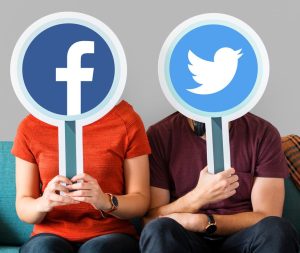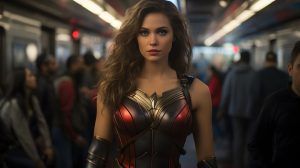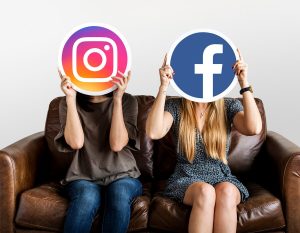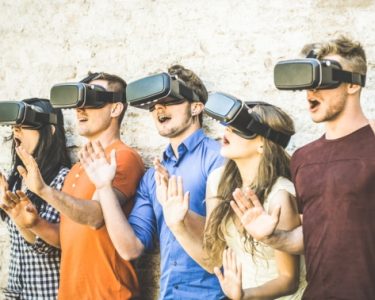Introduction
The landscape of movie marketing has undergone a seismic shift in the past decade, largely due to the advent and proliferation of social media. Gone are the days when traditional advertising channels such as television, print, and radio were the primary avenues for promoting new films. Today, social media platforms like Facebook, Twitter, Instagram, and TikTok have become indispensable tools for movie marketers. This article delves into how social media has transformed the way movies are marketed, the strategies employed, and the impact on audience engagement and box office performance.
The Evolution of Movie Marketing
Before the rise of social media, movie marketing relied heavily on trailers, posters, and press junkets. While these methods are still in use, they are now complemented by a robust social media strategy. The shift began in the mid2000s, coinciding with the rise of platforms like My Space and Facebook. As these platforms grew, so did their potential to reach and engage audiences in ways that traditional media could not.
The Power of Social Media Platforms

Each social media platform offers unique advantages for movie marketing:
- Facebook: With its vast user base and advanced targeting options, Facebook allows marketers to reach specific demographics with tailored content. Features like Facebook Live enable real time engagement with fans through Q&A sessions, behind the scenes footage, and more.
- Twitter: Known for its real time updates, Twitter is ideal for generating buzz around movie releases. Hashtags, trending topics, and live tweeting events like premieres and award shows keep audiences engaged and create a sense of community.
- Instagram: With its focus on visual content, Instagram is perfect for sharing movie posters, stills, and short video clips. Features like Stories and IGTV provide additional avenues for creative marketing.
- TikTok: The newest player in the game, TikTok’s shortform video content has proven highly effective for engaging younger audiences. Viral challenges and user generated content can amplify a movie’s reach exponentially.
Evolution of Social Media in Movie Promotion
Over the past decade, social media has evolved from a place to connect with friends to a powerful marketing tool. Movie studios have tapped into this potential to promote films in more dynamic and personalized ways. From the early days of Facebook and Twitter to the rise of Instagram and TikTok, each platform has provided unique methods to reach audiences.
The Role of Hashtags in Creating Buzz
Hashtags have become a fundamental part of movie marketing on social media. By creating a memorable and easy-to-use hashtag, studios can encourage fans to share their thoughts, experiences, and excitement for upcoming films. This was evident in the promotion of Star Wars: The Force Awakens, where #ForceFriday created anticipation and conversation months before the release.
Behind-the-Scenes Content Drives Engagement
Social media allows fans to see behind the curtain of filmmaking. Posting behind-the-scenes photos, videos, and interviews can generate interest long before the movie’s release. Platforms like Instagram and YouTube are perfect for this type of content, making fans feel more connected to the project and its stars.
Strategies for Effective Social Media Movie Marketing

Successful social media movie marketing campaigns often employ a mix of the following strategies:
- Teasers and Trailers: Releasing short teasers and trailers on social media generates excitement and anticipation. These snippets are often designed to be shareable, increasing their reach.
- Behind the Scenes Content: Audiences love getting a glimpse of what goes on behind the camera. Sharing behind the scenes photos and videos humanizes the production process and builds a deeper connection with the audience.
- Interactive Campaigns: Interactive elements like polls, quizzes, and contests engage audiences and encourage them to share content. For example, fans might vote on their favorite characters or scenes, creating a sense of involvement.
- Influencer Partnerships: Collaborating with social media influencers can amplify a movie’s reach. Influencers can create content related to the film, attend premieres, and share their experiences with their followers.
- User Generated Content: Encouraging fans to create and share their own content related to the movie can significantly boost engagement. This might include fan art, cosplay, or themed challenges.
Memes as a Marketing Tool
Memes have taken over social media, and movie studios have cleverly adopted them as part of their marketing efforts. When a film taps into meme culture, it can spread quickly across platforms, generating organic promotion. Bird Box became a massive hit partly due to the memes that emerged on Twitter and Instagram shortly after its release.
User-Generated Content and Fan Participation
Social media offers fans the chance to actively participate in marketing campaigns. Contests, challenges, and fan art competitions invite users to create content related to a movie, amplifying its reach. This strategy was used effectively in the promotion of Deadpool, where fans were encouraged to create their own posters and videos.
Trailers: A Social Media Event
Movie trailers have become events on social media, generating massive attention within minutes of release. Platforms like YouTube, Twitter, and Instagram allow trailers to be shared and discussed instantly, building anticipation. A great example is the Avengers: Endgame trailer, which garnered millions of views and conversations across social media in hours.
Case Studies

Several movies have successfully leveraged social media for marketing:
- Deadpool (2016): The marketing campaign for Deadpool is often cited as one of the most effective in recent history. The film’s irreverent tone was mirrored in its social media presence, with Ryan Reynolds’ character engaging directly with fans through humorous posts and videos.
- The Blair Witch Project (1999): Although predating the social media era, The Blair Witch Project utilized early internet forums and websites to create a viral marketing campaign that generated immense buzz and curiosity.
- Avengers: Endgame (2019): Marvel Studios used a combination of trailers, behind the scenes content, and interactive campaigns to build anticipation for Avengers: Endgame. The hashtag #AvengersEndgame trended for months, keeping the film top of mind for audiences.
The Impact on Box Office Performance

The influence of social media on box office performance is undeniable. Movies with strong social media campaigns often see higher opening weekend numbers and sustained interest. Social media buzz can also influence critical reception and word of mouth, further driving ticket sales.
Social Media Ads: Precise Targeting
One of the key advantages of social media advertising is its ability to target specific audiences. Platforms like Facebook and Instagram offer advanced ad targeting, allowing studios to promote their films to particular demographics based on age, interests, and location. This ensures that the right people see the ads, increasing the chances of a successful campaign.
Real-Time Interaction with Fans
Social media enables filmmakers, actors, and studios to interact directly with fans. Twitter is especially useful for real-time engagement, where fans can ask questions, share their thoughts, and even receive responses from movie stars. This type of interaction builds stronger connections between fans and the film.
The Influence of Social Media Trends
Movie marketers are always on the lookout for the latest social media trends. Whether it’s viral challenges, popular memes, or trending hashtags, studios adapt their campaigns to align with what’s hot on platforms like TikTok and Instagram. By riding the wave of these trends, movies can become part of the larger cultural conversation.
Measuring Success through Social Media Analytics
One of the most valuable aspects of social media marketing is the ability to measure success. Platforms like Facebook, Instagram, and Twitter offer detailed analytics that show how many people are engaging with content, how it’s being shared, and what the overall sentiment is. This real-time data allows studios to adjust their campaigns to optimize results.
Challenges and Considerations

While social media offers numerous advantages, it also presents challenges. Negative reviews and backlash can spread quickly, potentially harming a movie’s reputation. Additionally, the fast paced nature of social media means that marketers must be constantly vigilant and responsive.
-
Content Saturation
The sheer volume of content on social media can make it challenging for a movie’s marketing campaign to stand out. Creative and unique content is essential to capture and maintain audience attention. Consistency is key; regular updates and fresh content help keep the audience engaged over time.
-
Managing Negative Feedback
Social media’s real time nature means that negative feedback can spread quickly. Studios must be prepared to handle criticism and address concerns promptly and professionally. Transparency and authenticity are crucial in maintaining trust and credibility with the audience.
-
Measuring Success
While social media platforms provide various metrics, determining the direct impact of social media marketing on box office performance can be complex. Combining social media analytics with other data sources, such as ticket sales and audience surveys, provides a more comprehensive understanding of a campaign’s effectiveness.
Analysis Table
| Key Elements | Traditional Marketing | Social Media Marketing |
| Cost | High (TV ads, billboards) | Lower cost, highly adaptable |
| Reach | Limited to specific regions | Global, instant reach |
| Engagement | One-way communication (audience is passive) | Two-way communication (audience is interactive) |
| Targeting | Generalized targeting based on demographics | Precise targeting based on data and behavior |
| Speed of Feedback | Slow | Instant feedback and real-time adjustment |
| Virality | Rare, dependent on external factors | Frequent, boosted by user-generated content |
| Platform Diversity | Primarily TV, print, and radio | Multiple platforms (Instagram, Twitter, TikTok) |
Comparative Table: Social Media Platforms Used in Movie Marketing
| Platform | Key Features | Popular Campaigns | Target Audience |
| Visual content, stories, reels | Frozen II, Black Panther | Millennials, Gen Z | |
| Real-time interaction, hashtags | Avengers: Endgame, Spider-Man: No Way Home | General audience, film enthusiasts | |
| Community building, event creation | Star Wars: The Force Awakens | Older audiences, family-centric films | |
| TikTok | Viral challenges, short videos | Bird Box, Top Gun: Maverick | Gen Z, teens |
| YouTube | Trailers, interviews, behind-the-scenes | Dune, Jurassic World | General audience, cinephiles |
Conclusion
Social media has revolutionized modern movie marketing, offering unparalleled opportunities for engagement and reach. By leveraging the unique features of platforms like Facebook, Twitter, Instagram, and TikTok, movie marketers can create dynamic, interactive campaigns that resonate with audiences and drive box office success. As social media continues to evolve, so too will the strategies and tactics employed in movie marketing, ensuring that this dynamic field remains at the cutting edge of digital innovation.
In summary, the integration of social media into movie marketing strategies has not only transformed the way films are promoted but also how audiences engage with them. The future of movie marketing is undoubtedly digital, and social media will continue to play a pivotal role in shaping the industry’s landscape.




